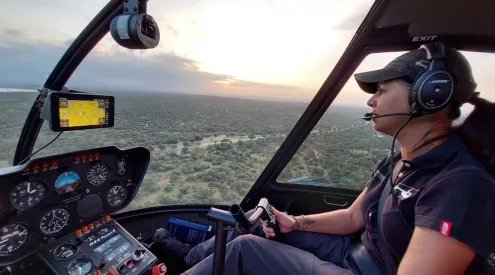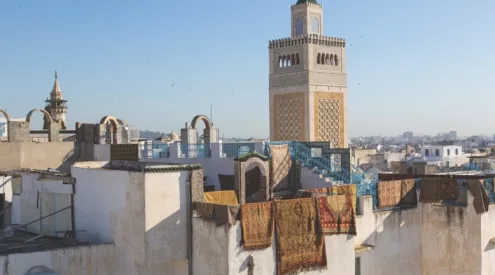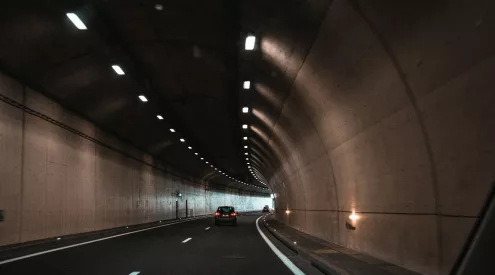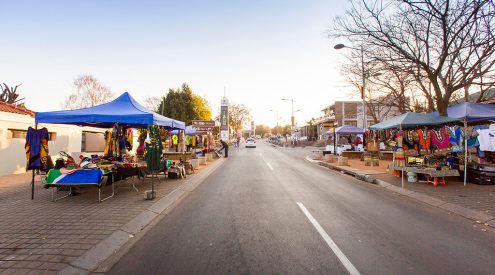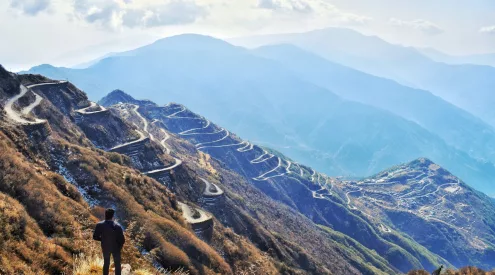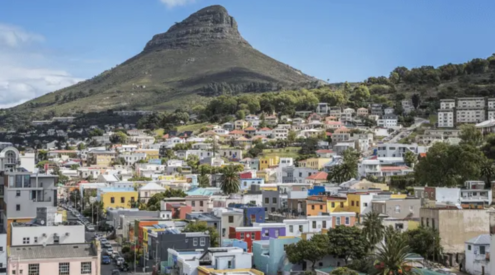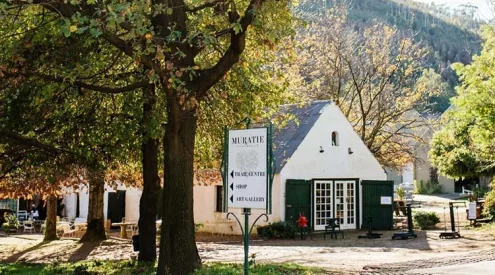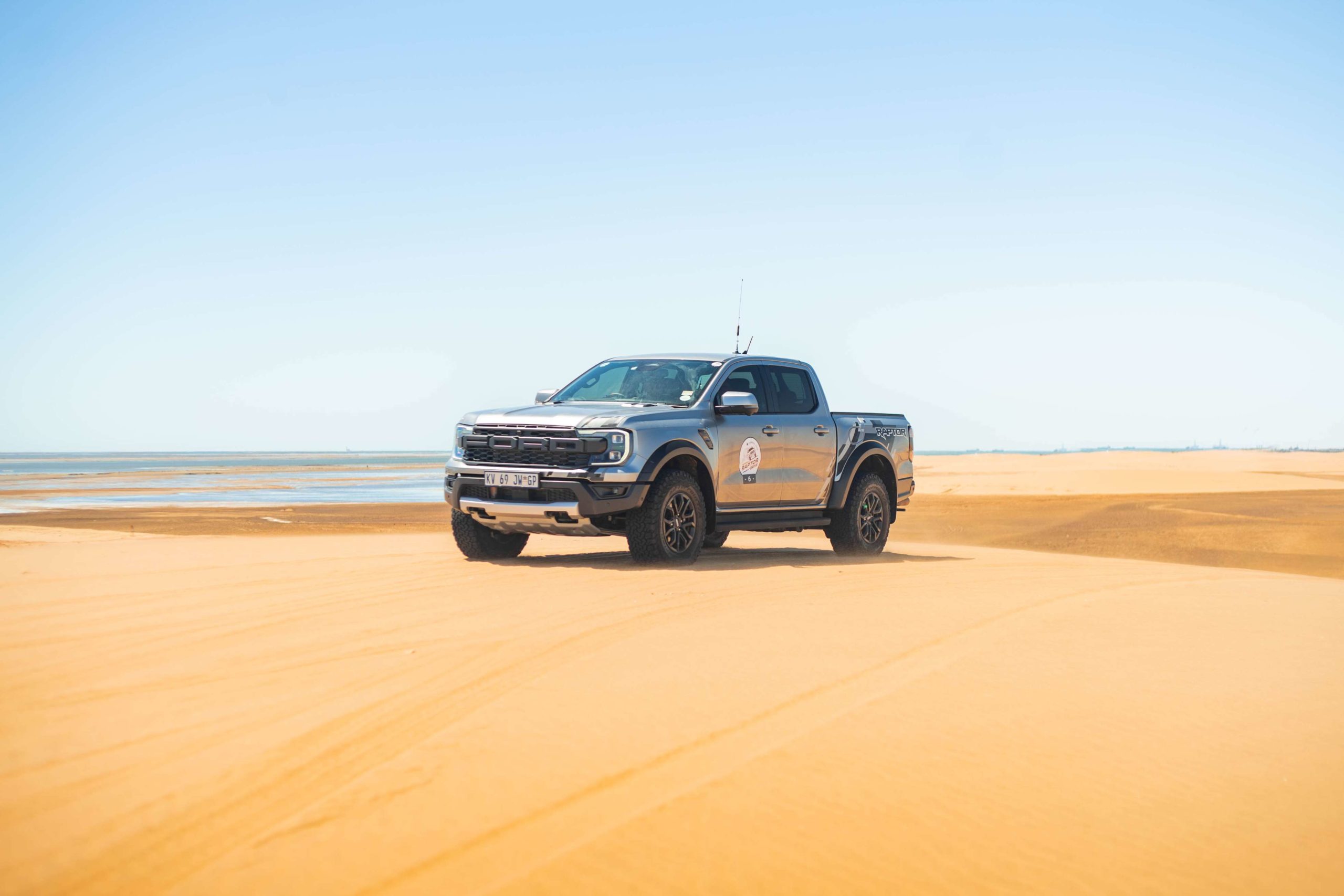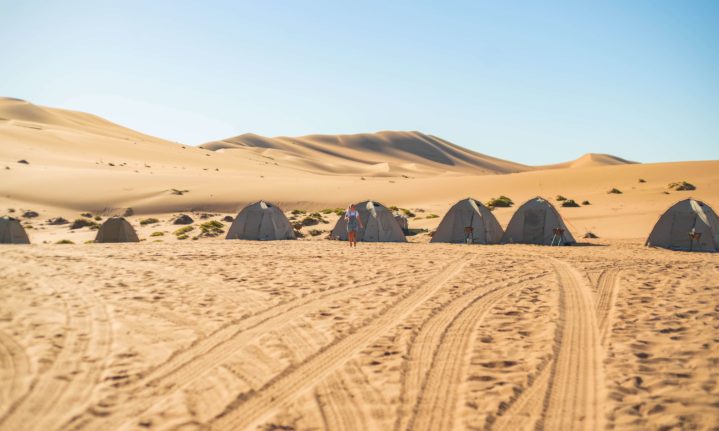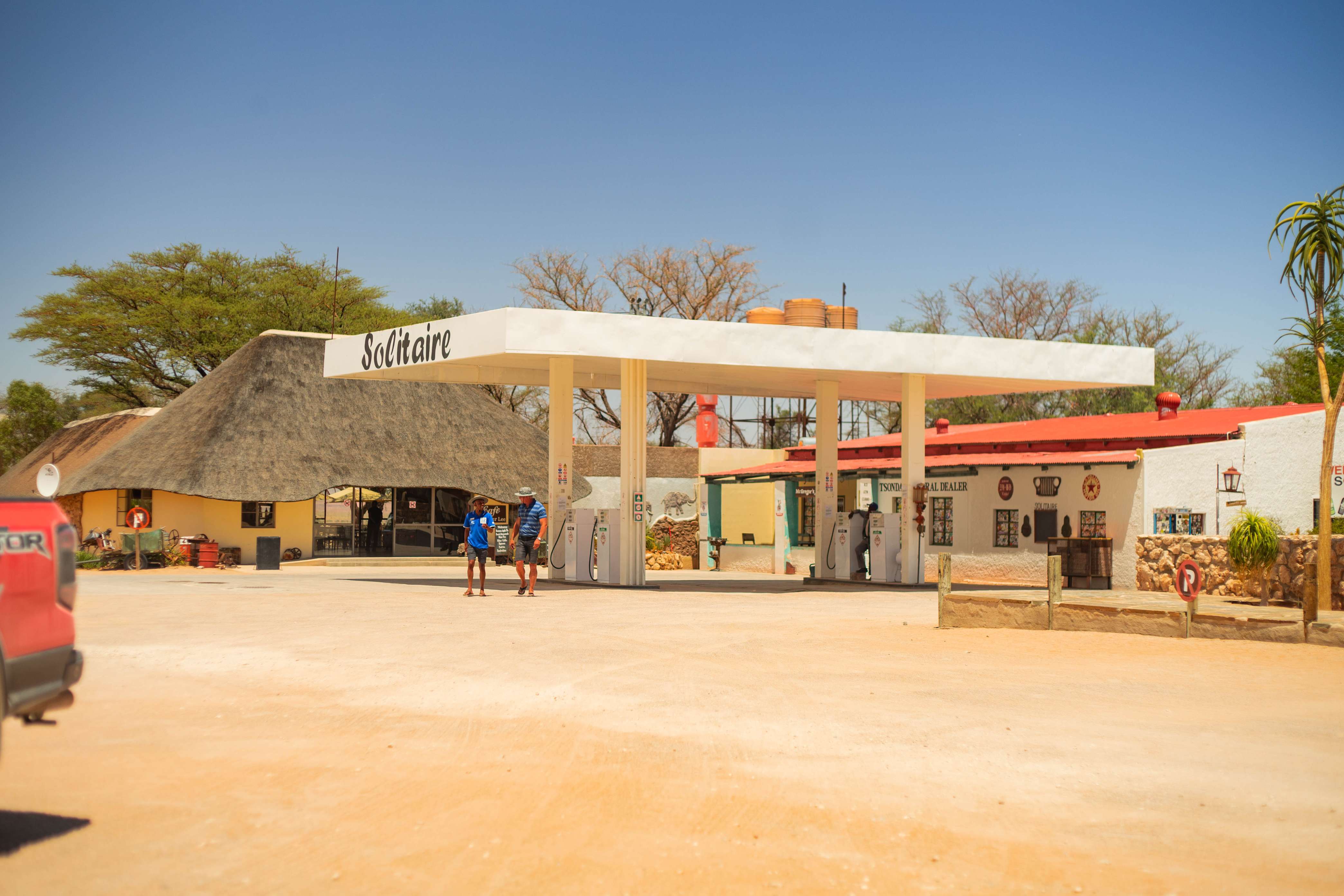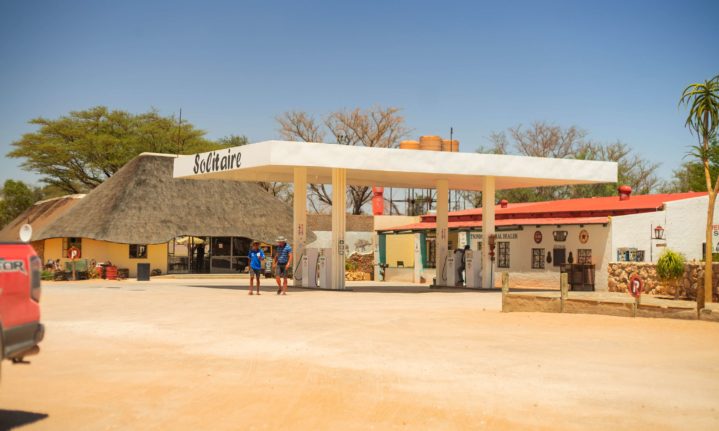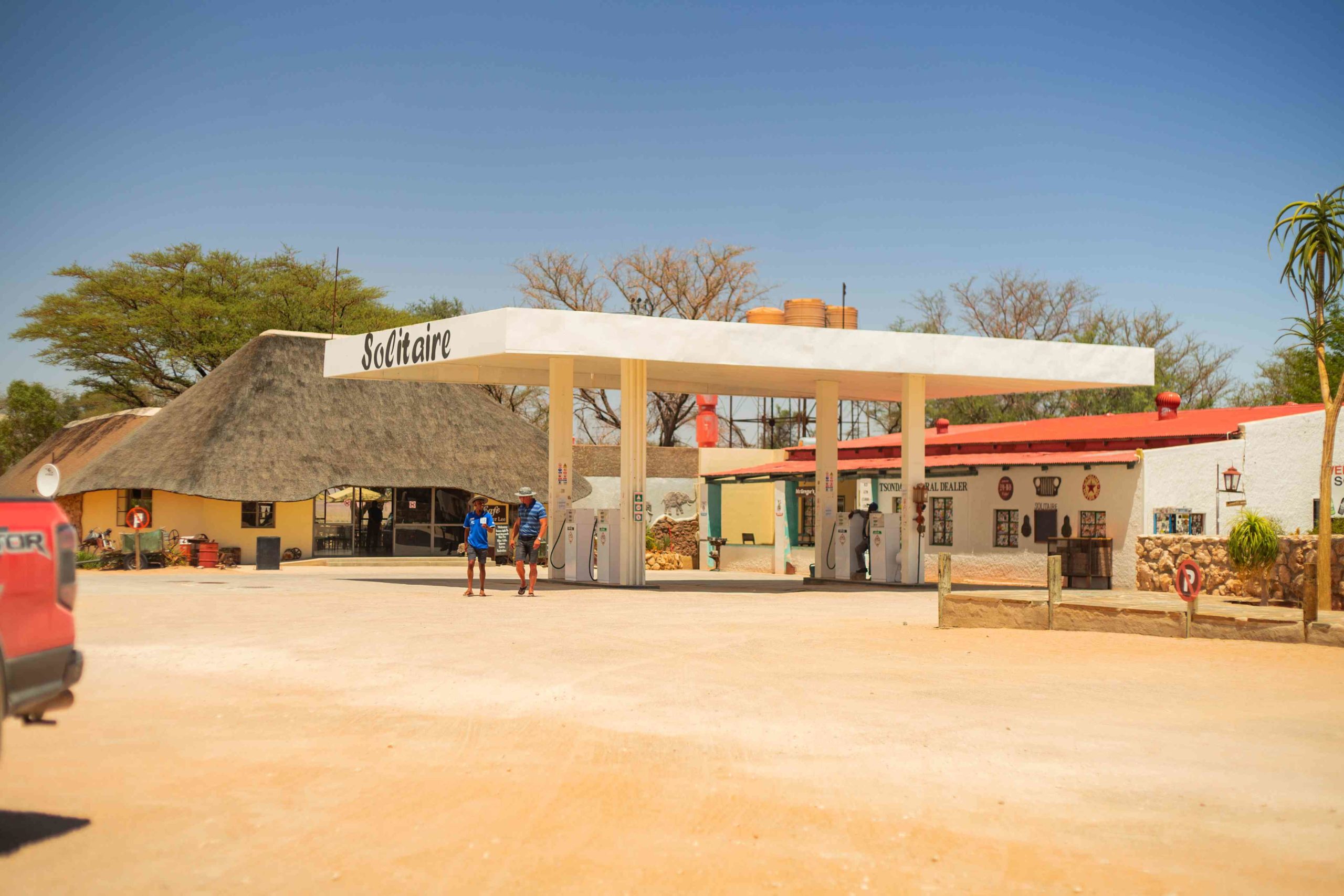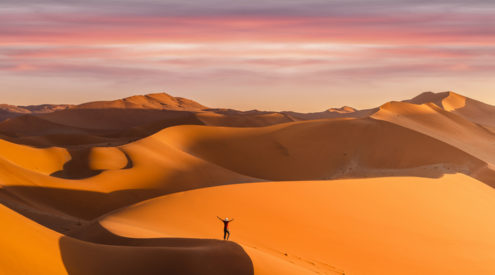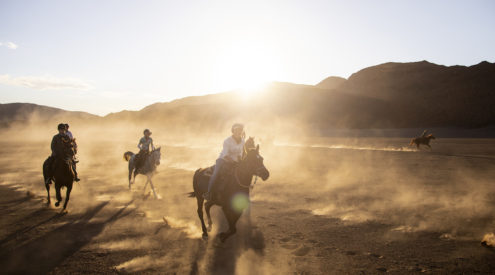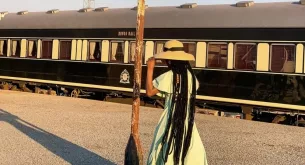Spellbinding illumination from the starry night above to the incomprehensible number of sand granules comprising the dunes below, Namibia remains a land of infinite wonder.
Written by Alexander Shahini
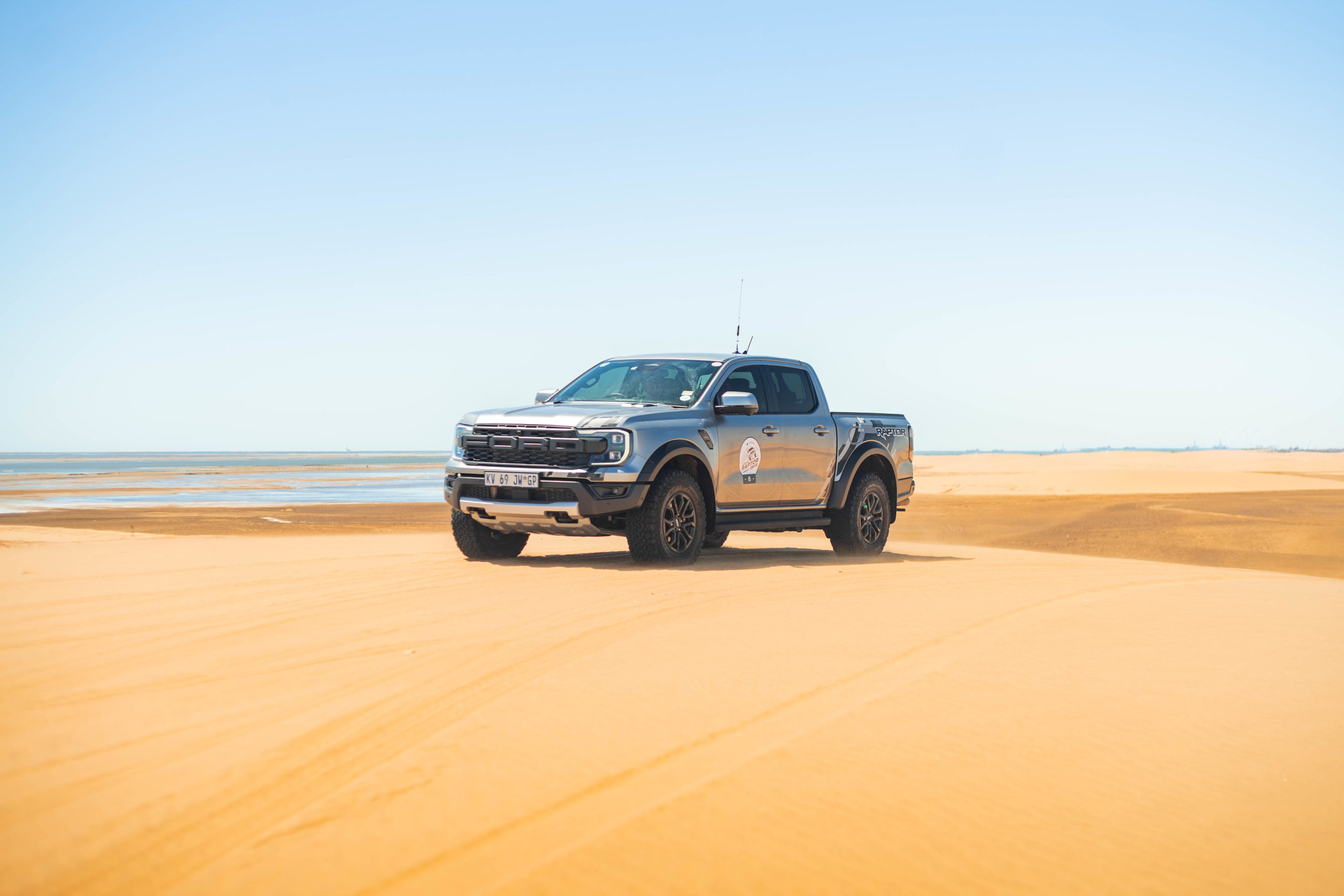
Overlanding isn’t for everyone, nor is camping in the most baron and desolate parts of the world. Still, a stone’s throw outside of South Africa is where these experiences are aplenty for foreigners on a foray. Dig your bare feet into the sand below; it’s time for an accessible adventure!
Namibia, ranking high in the list of most sparsely populated countries, is home to fewer people than South Africa’s most populous cities; Johannesburg, Cape Town and Durban. With expanses of dunes as far as the eye can see from the aircraft venturing towards Walvis Bay International Airport, now was better than ever to get acquainted with the land of infinity.
Out of the small hangar-sized international airport awaiting us was a convoy of Ford’s latest Ranger Raptor. The group of 14 vehicles began making its way on the very few tarred road sections in that part of the country. With National parks and protected areas part of the route plan, a certified overlanding tour guide is a must.
Chaperoning us off the beaten path was Namtrax Tours and Safaris, with their expertise and prowess keeping us unstuck. A few kilometres South of Walvis Bay, plumes of dirt road dust began emanating aft of the vehicles. We were officially overlanding!
Soon enough, the roads ended, and undisturbed dunes dominated the view ahead of the dashboard. One by one, all-terrain tyre tread began leaving its mark on the golden surface beneath, only for the wind in the coming days to return the surface the way nature had intended. On the opening day, our exploits had us cruising between where dunes meet the Atlantic, meters away from the chilly water.
Dodging the occasional pools of salinity banked beyond the break of waves, we ensured the corrosive substance would not manifest itself on the brand-new bakkies serving as our companions on this journey. Stop, park on the water’s edge and enjoy the view. Once the tranquil sound of waves crashing onto the beach was abruptly broken by the sound of the bakkies coming to life, it was time to head to our accommodation for the next few nights. Inland with the dunes!
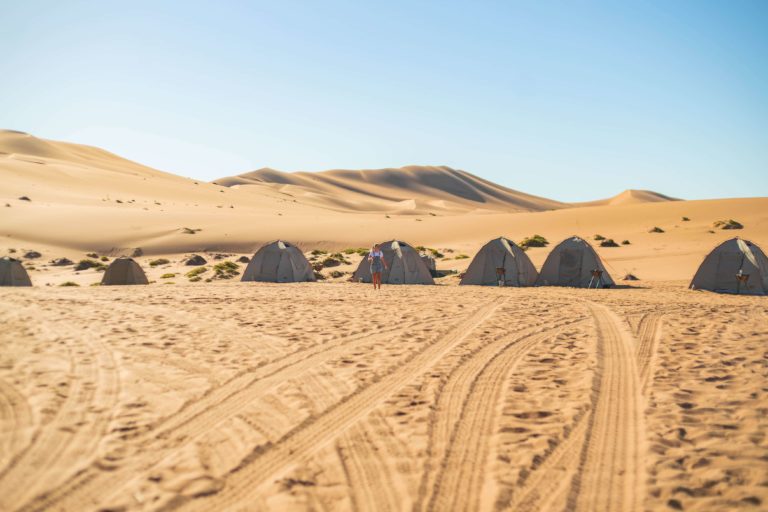
Welcomed by a pre-prepared laager of tents and amenities in the dune slack, this would serve as a base camp for the ensuing overlanding experiences in the surrounding expanses of desert. Dozens of kilometres away from any civilisation, as the last bits of sunlight lingered over the erg, the night sky consumed the heavens, and a marvel of any desert became prevalent; constellations in the cosmos, shining in all of their glory. Infinite wonder. Mind your feet, though, despite the lack of vegetation; nightcrawlers are out and about searching for their next meal, this is scorpion country.
The next two days were spent exploring million-year-old rock formations and releasing an inner child in the dunes. Driving prowess is necessary for tackling the soft fesh-fesh underneath the significantly deflated tyres. Like a roller coaster, up and down the undulating dunes with the back end of the bakkie getting sideways once the throttle is pinned. Mercury reaching 40 with the sun directly overhead ensures a plentiful supply of the good stuff; water. Prudent, too, would be packing clothing that could conceal the mouth and nose and a pair of sunglasses to keep the fine power out of places it shouldn’t be.
Dune-decimating theatrics completed, it was time to pack up and embark on a grand voyage back into South Africa. After departing from Walvis Bay, the first destination is an overnight stop at Lapa Lange Game Lodge just outside of Mariental. Before reaching the quaint inland town, the convoy traversed through well-graded dirt roads, moving towards the country’s interior. The more distance covered, the less the surrounding biome signified a desert. Shrubbery and flora were becoming more prevalent, but the views over each horizon remained equally as breathtaking.
Signboards signifying small towns unfamiliar to me were abundant for the first few hours of the journey until the sticker-bombed Tropic of Capricorn came upon us. At this point, the mercury showed in the mid-40s, but the air-conditioned interior of the bakkie served as an oasis amid a harsh exterior environment. Snap a few photos halfway between the equator and the South Pole, and off we went again.
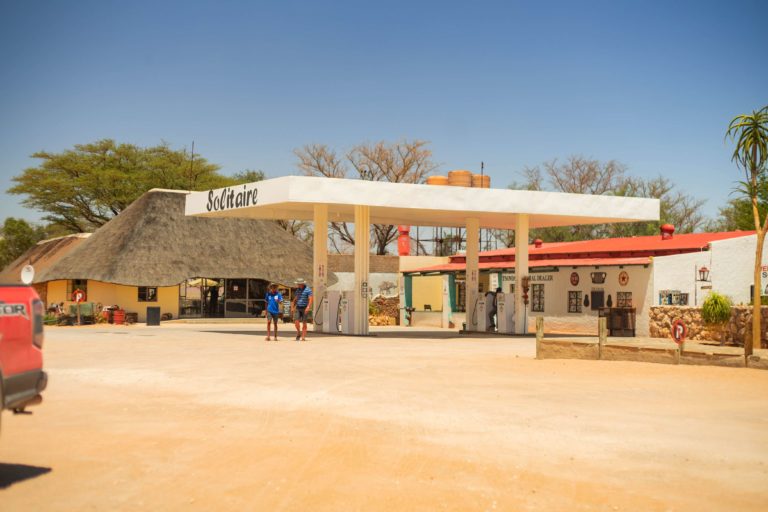
Pictures: supplied
Refuelling was essential in Solitaire, a one-horse town in the Khomas Region, serving as a halfway point between our departure and arrival destinations. Quaint and picturesque, the solitary service station specialises in refuelling weary tourists and their safari-ready companions. Afrikaans is the language of communication throughout the country but particularly in the remote settlements, dust off that dictionary for the world’s youngest language because it will come in handy. High school Afrikaans, your purpose has been fulfilled!
Moving further towards the country’s southeast, the border with South Africa and Namibia loomed, and so did our neighbouring country’s second most common language, Khoikhoi. Second to only Ovambo, the official language of the single largest ethnic group in the country, crowds flocked towards the convoy of dust-covered metal in Koes and Arab.
Rietfontein border crossing in sight, it was time to say goodbye to the friendly faces of Namibia, this was the end of our desert delight in the land of infinite wonder. But before we left the Kalahari, we allowed it to impart one last impression on us at Tannie Koera se Plaaskombuis – cuisine prepared using traditional San recipes.
Before long, we arrived in Van Zylsrus before arriving at our overnight stay in the Northern Cape. As dorpie as it gets, the hotel bearing its name serves as a watering hole and meeting point for locals.
The clear night sky on our side of the border still symbolized an extravagant dappling of light and dark, but the clarity in the romantic dunes of Namibia remains hard to beat. Until next time.


